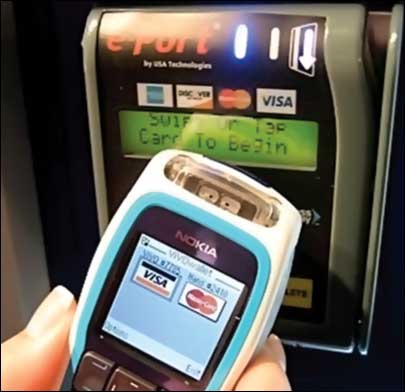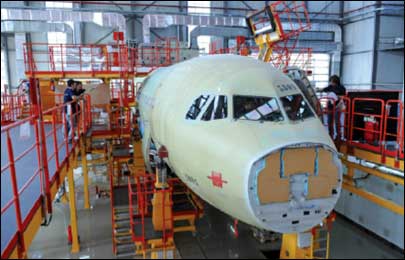A year ago, we wrote that 2007 was devoid of technology breakthroughs, tagging mandates and other major news in the world of radio frequency identification. This past year, despite the economic woes that battered the global economy in the second half of 2008, we saw some significant innovations in RFID technologies, as well as a number of important deployments and new tagging mandates. In fact, 2008 was filled with too many developments to limit the news to a top-10 list. To see what could lie ahead, let’s look at 12 of the key stories from 2008 published on RFIDJournal.com and in RFID Journal magazine.
1. American Apparel Expands RFID to Additional Stores
Many apparel retailers have been reluctant to adopt RFID despite a clear return on investment because they are afraid that opponents of the technology would stir up bad publicity. That didn’t happen when American Apparel announced it had adopted item-level tagging at its Columbia University store in New York City, or when it expanded the rollout to six more stores in the city and one in Santa Monica, Calif. That will encourage other apparel retailers to adopt the technology.
|
|
2. Financial Consortium Publishes RFID Standards for IT Assets
The Financial Services Technology Consortium—an organization comprising North American financial institutions, technology vendors, independent research organizations and government agencies—published a set of standards that would require technology companies to RFID-tag servers and other equipment being shipped to financial institutions. If implemented, the standards could foster the use of RFID in all data centers to track IT assets.
3. GSM Association Calls for NFC-Enabled Cell Phones
The mobile service provider association called for Near Field Communication functionality to be built into commercially available mobile handsets in mid-2009. While that deadline might be overly ambitious, NFC usage gathered momentum in 2008. In October, Visa partnered with Nokia to deliver a range of applications, including contactless payments, money transfers and remote payments for goods and services, through the NFC-enabled Nokia 6212 Classic cell phone.
4. Kovio Unveils Printed-Silicon HF RFID Tag
The startup produced working samples of its low-cost RFID tag—the circuitry is printed, as well as the antenna. The printed chip complies with the ISO 14443A standard and can contain 128 bits of factory-encoded data. Commercial products will be available in 2009, and sources say the company has some major customers lined up.
5. Metro Group, DHL to Roll Out RFID in France
The two companies plan to tag some 1.3 million pallets shipped to the 89 Metro Cash & Carry stores in France to speed delivery. The rollout is significant not just because it’s the largest deployment of RFID in French retail, but also because it creates a model for retailers and their third-party logistics providers to work together to improve efficiencies.
6. Industry Opinion Favors RFID for Drug E-pedigree
Comments received by the U.S. Food and Drug Administration show a preference for RFID technology for a pharmaceutical e-pedigree identification system, with 2-D bar coding as a backup. With California delaying its e-pedigree requirements until 2011, it’s likely the industry will move toward using RFID for drug pedigrees.
7. Airbus Trials Showing Strong Results
The aircraft manufacturer has decided to permanently roll out an RFID application for tracking jigs, and has also launched RFID pilots for tracking work orders and tools. Because Airbus is deploying RFID as an infrastructure across its enterprise, its success could provide a model for other large industrial manufacturers.
8. USDA Pushes Plan to Move NAIS Forward
The U.S. Department of Agriculture aims to enroll 70 percent of all cattle in the country in the National Animal Identification System by 2010. The plan could help secure the nation’s beef supply and encourage other food suppliers to adopt RFID for track-and-trace.
9. RFID 2.0
Mojix and RF Controls developed next-generation ultrahigh-frequency systems that promise to deliver a new level of performance previously thought impossible, as well as to lower the cost of deployment.
10. Wal-Mart-Commissioned Study Shows RFID Improves Store Inventory Accuracy
University of Arkansas researchers found that RFID can reduce the degree of understated perpetual inventory, helping retailers to lower their costs. Wal-Mart has expanded the trial, and the results could provide a benchmark for other retailers.
11. Electronic Vehicle Registration Picks Up Speed
As nations using passive tags to verify that cars are registered and monitor traffic levels prove that RFID enhances efficiencies without endangering consumer privacy, more countries are likely to follow suit.
12. Sam’s Club Tells Suppliers to Tag or Pay
Many suppliers are paying the fee for untagged pallets they ship to Sam’s Club, and most are not preparing to tag “sellable units.” But Sam’s Club seems serious about its mandate, which means suppliers will need to scramble to get compliant.



